By Rick VanSickle
In this B.C. Wine Report, the last before the end of the year, we take a look at new wines from Kelowna’s Sperling Vineyards, including the Guy Lafleur 60 sparkling brut and Campbell Kind Wine Pinot Blanc, plus three top reds from Gold Hill Winery.
Sperling Vineyards
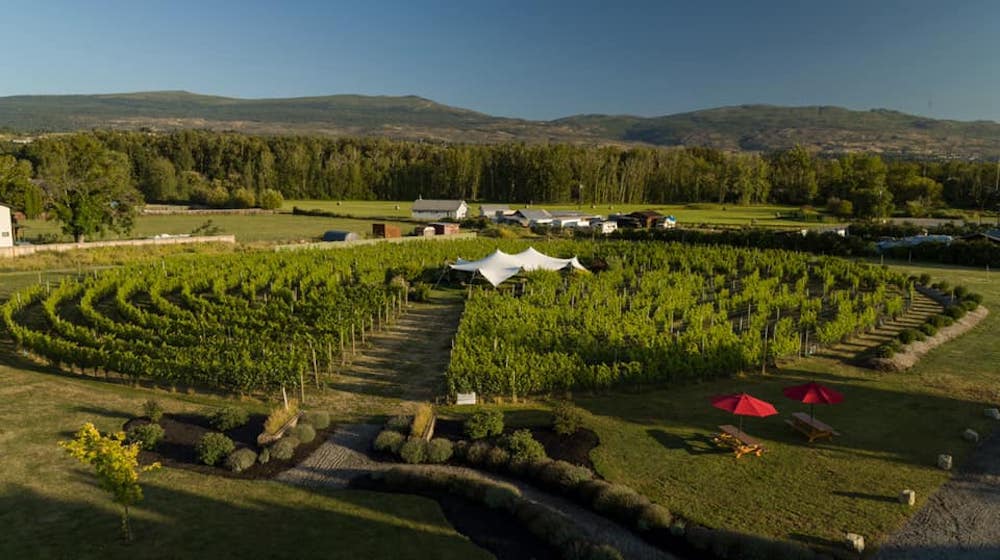
Sperling Vineyards, established in 1925, has established a reputation for producing elegant, certified organic wines of character sourced exclusively from its estate vineyard on the high elevation slopes and mineral rich soils of the east benches of Kelowna.
Head winemakers and partners, Ann Sperling and Peter Gamble, have immense respect for viticulture and distinctive terroirs not only at Sperling, but also at their passion project, Versado in Argentina, and as head winemaker at Southbrook Vineyard in Niagara (Sperling) and key winery start-ups in Ontario and Nova Scotia (Gamble).
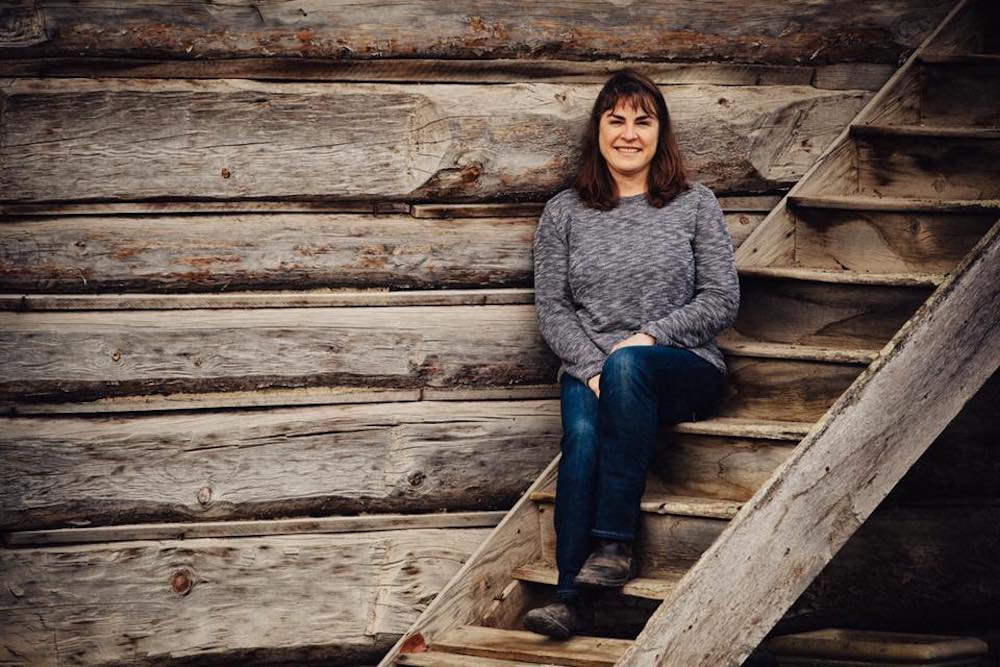
From her earliest winemaking positions in the ’80s, Sperling, above, has pursued hands-on and hands-off skills in areas of whole-farm, vine management, single vineyard bottlings, indigenous fermentations and non-interventionist winemaking methods.
The talents of Sperling and Gamble have helped to shape one of B.C.’s most exciting — and diverse — lineups of wine. In this report, I was particularly impressed with the old vine Rieslings — two styles to choose from — and a pair of late harvest wines — one from 2010 and just being released now.
We also tasted the new Guy Lafleur 60 Blanc de Blancs Brut 2012 and the Campbell Kind Wine Pinot Blanc, both collaborative wines made at Sperling.
First, the new releases from Sperling:
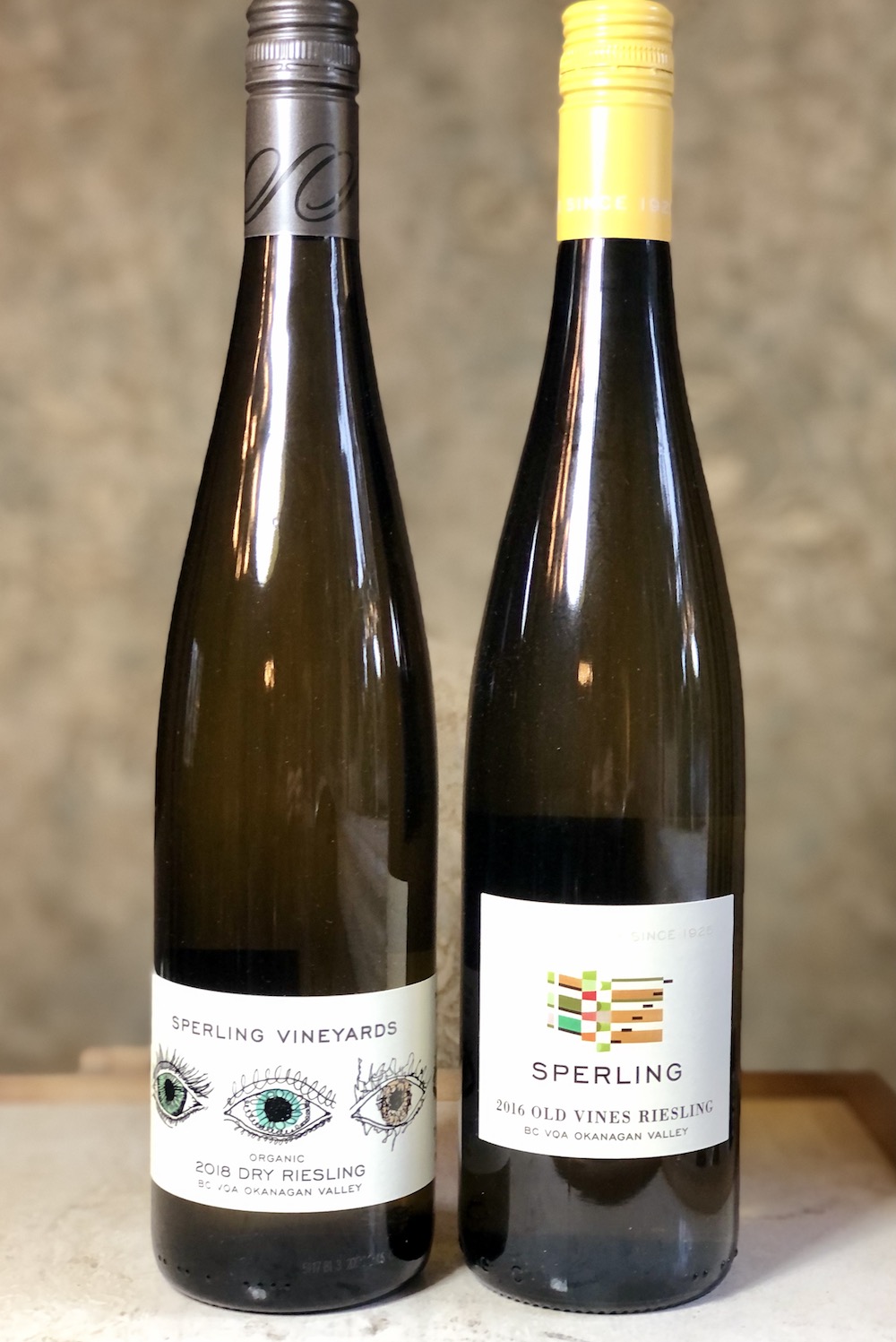
Sperling Organic Dry Riesling 2018 ($35, 92 points) — Bottled under the Vision series, this bone-dry (less than a gram of RS) Riesling is gorgeous with a nose of deep veined minerality, lemon-lime, perfumed pear and salinity. The dry profile highlights the stony minerality on the palate to go with pure lemon, zesty lime, apple skin, subtle peach notes and lovely freshness through the finish. This can age and get better and better for 10+ years.
Sperling Old Vines Riesling 2016 ($35, 94 points) — The Old Vines Riesling is the flagship wine from Sperling. It’s never released until two years in the bottle has past. In most years it’s harvested at 20.5 to 21.5 brix and 10 g/L of acidity. The fruit is hand-harvested in late fall, then bunch sorted and de-stemmed with a 4-6 hour cold soak before gentle pressing. Slightly settled juice is fermented cool with non-aromatic and wild yeast in stainless steel to desired dryness when fermentation is halted. It’s a nice contrasting wine to the Vision Riesling above, as this one isn’t afraid to show a bit of sweetness. Wow, talk about minerality! There’s pure mountain stream, river-rock and saline jumping from the glass with lemon pith, crisp green apple, subtle ginger notes and lime zest. There is some wild honey sweetness on the palate but nicely balanced from the racy acidity, then lemon, grapefruit, apple skin, ginger and crushed stones all leading to a fresh, vibrant finish. Another beauty for the cellar.
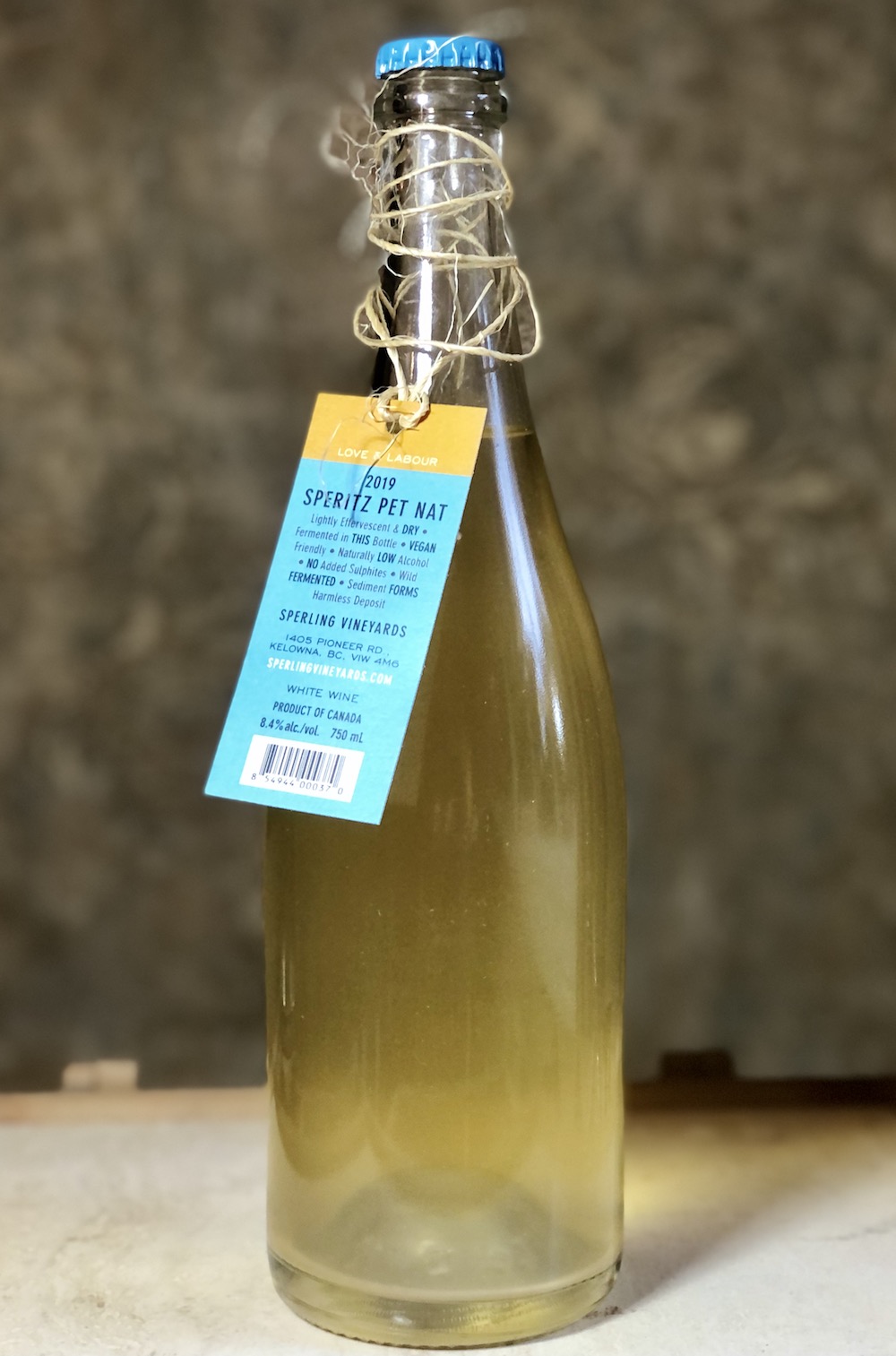
Sperling Speritz Pet Nat 2019 ($30, 89 points) — This unique pétillant naturel (“natural sparkling”) wine is made from Perle of Csaba grapes planted at the estate in 1934. It’s fermented in bottle, has naturally low alcohol, no added sulphites, no fining, no filtration, wild fermentation and bottled with lees. It’s vegan, gluten free and as natural a wine as you will find. It pours with a light effervescence in the glass with a nose of peach, apricot, apple, biscuit, leesy accents and poached pear. It has tangy acidity on the palate with notes of fuzzy peach, lemon zest, nectarine and a minerally, lifted finish.
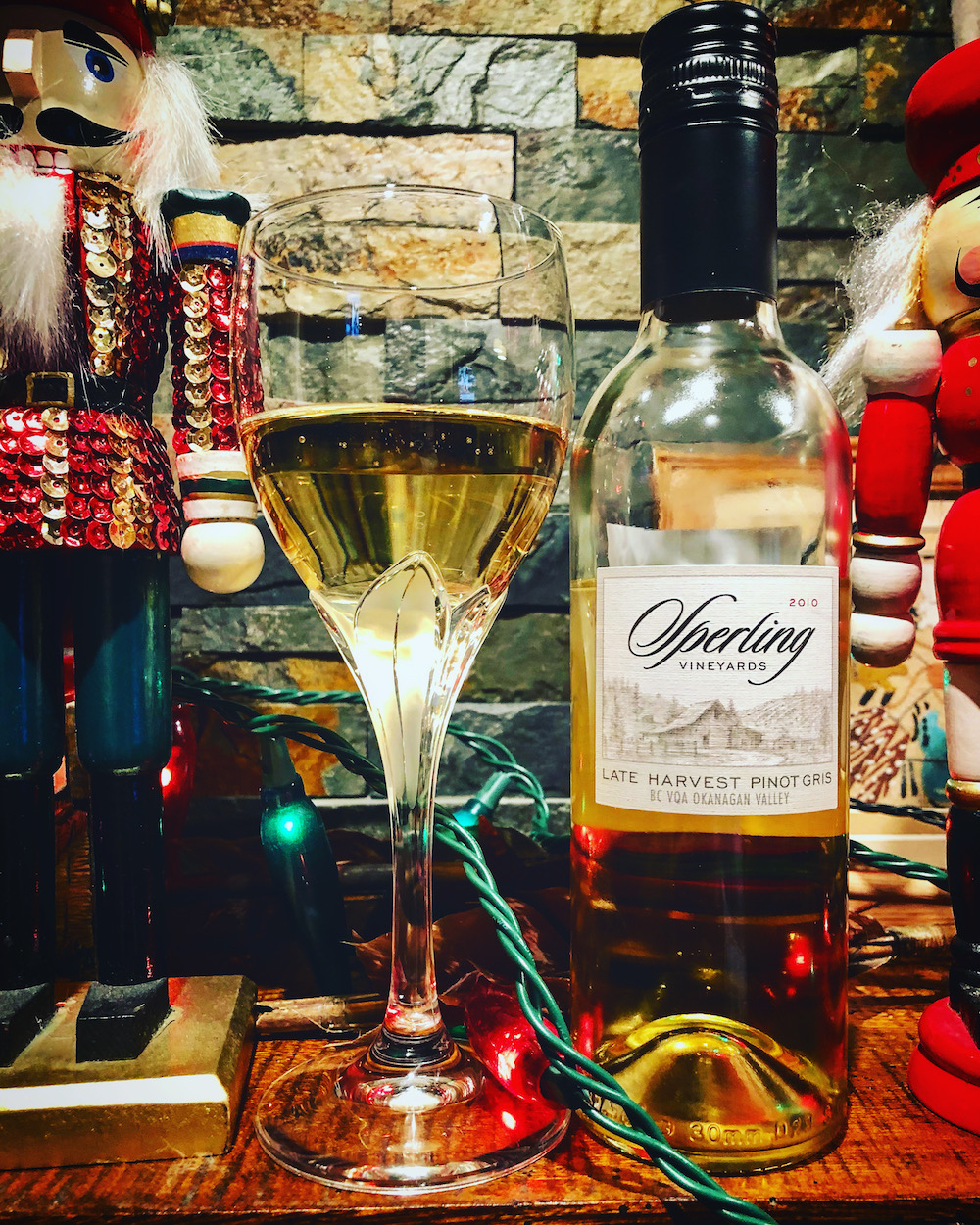
Sperling Late Harvest Pinot Gris 2010 ($30 for 375 mL, 93 points) — What a great opportunity to see what 10 years of bottle aging does to a wine. This Gris was partially botrytis affected, a tricky venture in the vineyard that can add complexity, intensity and a honeyed character to still or late harvest wines. The nose on this gem is thrilling with notes of compoted apricot, wild honey, lanoline, cantaloupe and candied tropical fruits. It has wonderful texture, almost oily in the mouth with notes of beeswax, honeycomb, concentrated tropical fruits, ginger spice and ripe apricot that’s sweet but tempered by a firm acidic backbone. It has a luxurious feel on the finish and just starting to show wonderful tertiary flavours. Can cellar even longer to entice added layers of flavour.
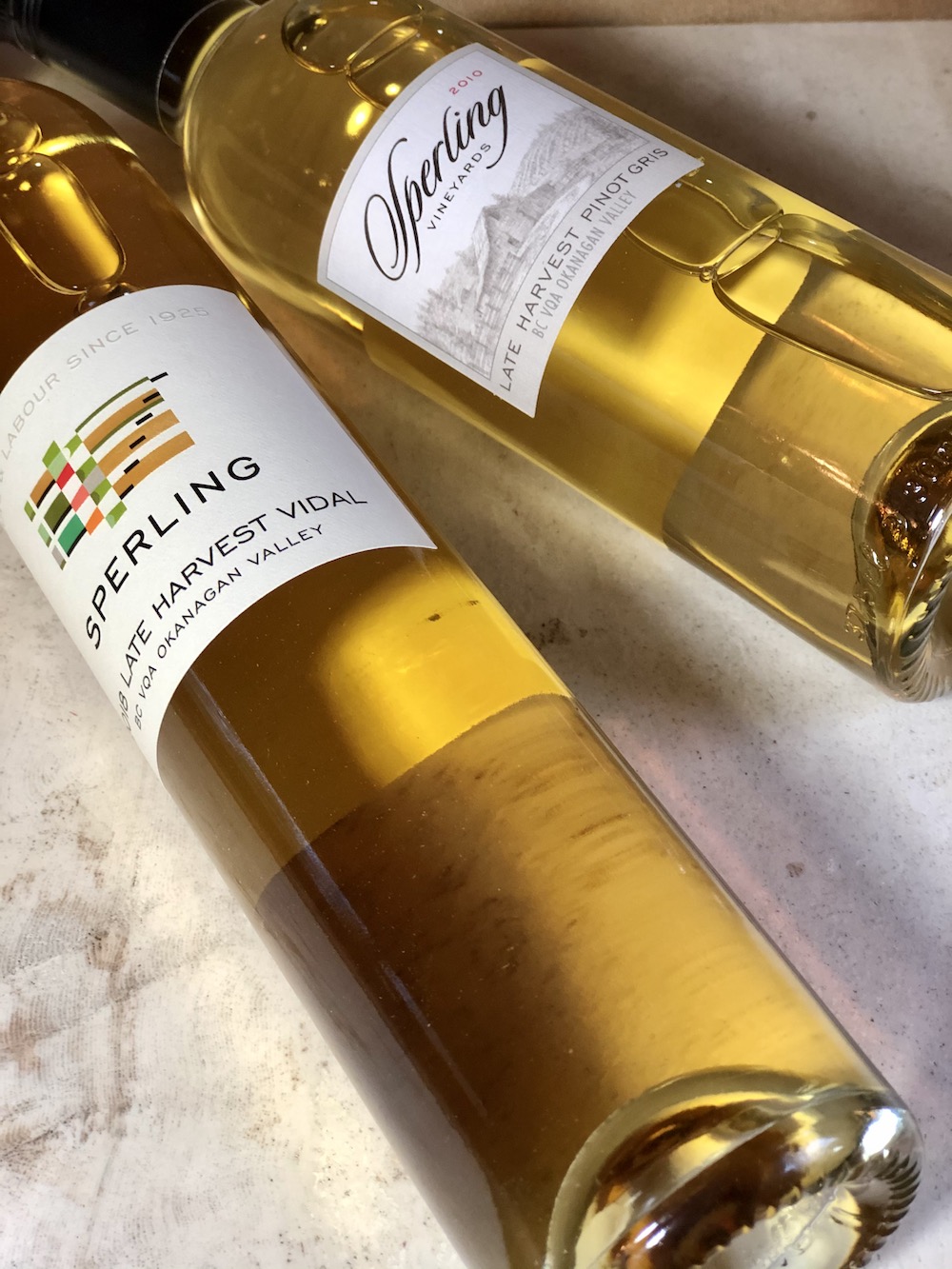
Sperling Organic Late Harvest Vidal 2018 ($30 for 375 mL, 91 points) — Winemaker Sperling has had a fascination with late harvest and botrytis affected wines since the mid-80s. The concentration, and texture of late harvested wines triggers an exciting challenge to make a harmonious and refreshing wine in spite of the obvious intensity. Ideally mature grapes are harvested at 30 brix depending on the season and selection. Acidity is key, so harvest parameters include target acidity of 10 g/L to counter the 123 g/l of residual sugar. It shows a beautiful golden colour in the glass with a ripe nose of peach, apricot, marmalade and grilled pineapple. It reveals itself in layers on the palate with peach cobbler, apricot jam, candied citrus and canned tropical fruits with a nice balance between sweet fruit and racy acidity on the finish.
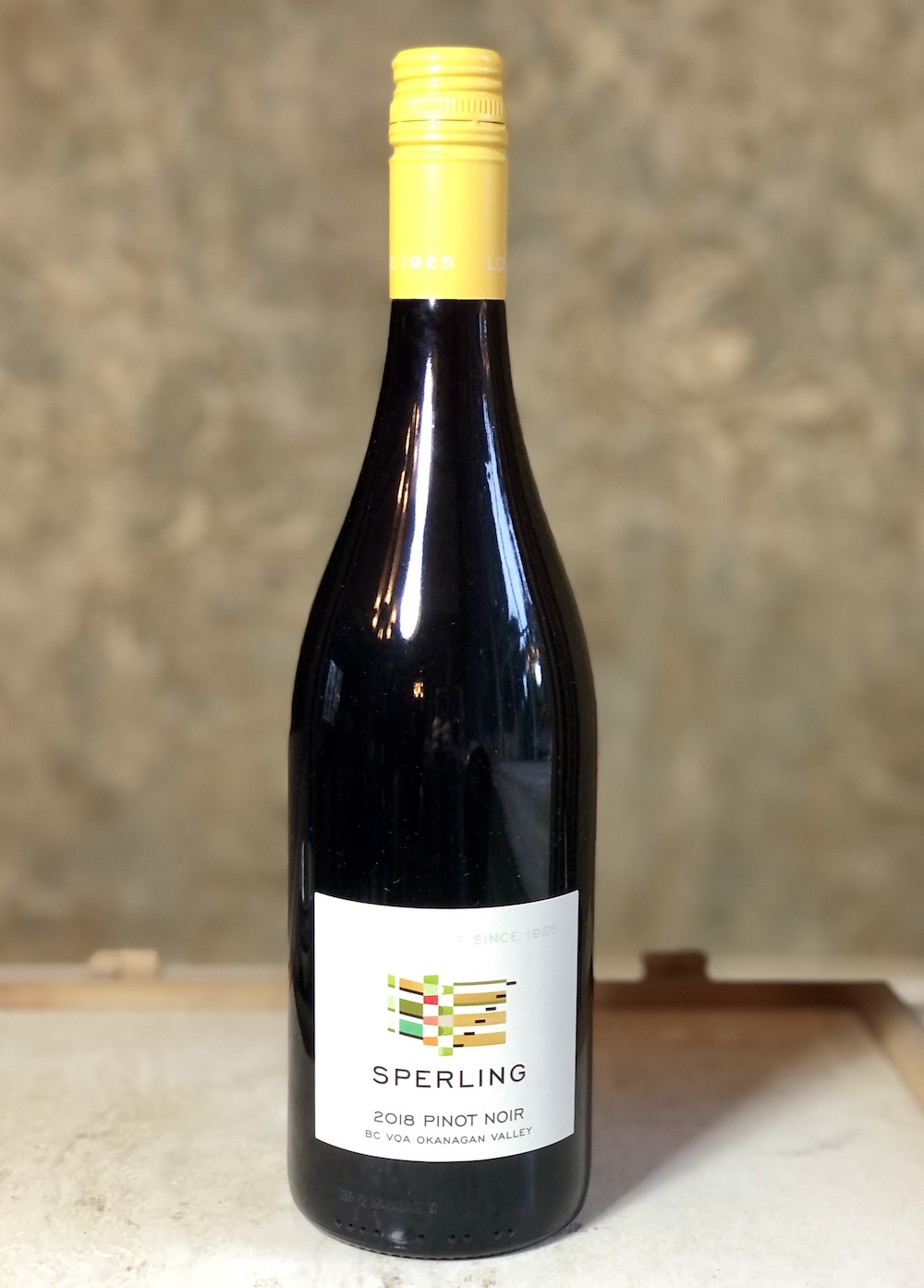
Sperling Pinot Noir 2018 ($35, 90 points) — From estate vines planted in 2008 on blocks noted for their calcium-limestone rich clay soils, the juice was fermented in 1 and 4 tonne lots, including 40% whole clusters, then barrel aged in large format French oak barrels, with a tiny percentage of new wood. The nose shows bright cherries, forest berries, wild raspberries, cranberries, bramble and a hint of oak spices. It’s a lighter-bodied Pinot but certainly shows it stuff on the palate with crunchy red berries, savoury spice notes, some anise and a vibrant, finessed finish.
Sperling collaboration wines
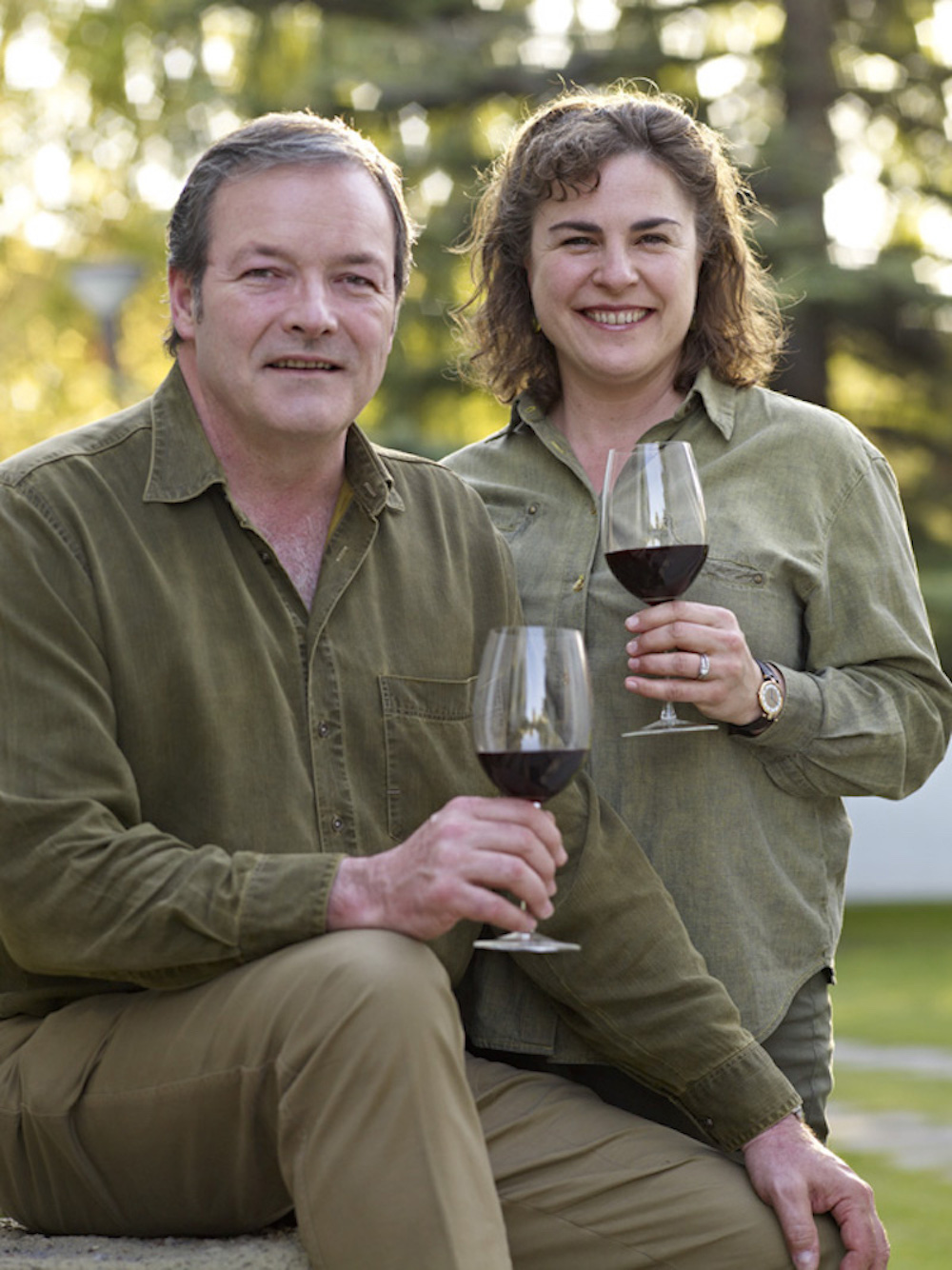
Ann Sperling and Peter Gamble, above, have always been sought after for their winemaking and vineyard skills. Gamble is a well-known consultant and winemaker on many winery projects in Canada and beyond, and Sperling is the winemaker at Sperling, Southbrook and the couple’s wine project in Argentina called Versado.
So when hockey legend Guy Lafleur (The Flower) wanted to celebrate select Canadian vintners, he contacted Sperling and Gamble to help him find excellent hand crafted small lots to share with his fans and admirers.
The results are a Niagara grown Grand Vin red blend from barrels hand selected from the cellar at Tawse winery, and the recently released Blanc de blancs vintage sparkling made by the team at Sperling Vineyards. Word is there will also be a Quebec gin coming soon.
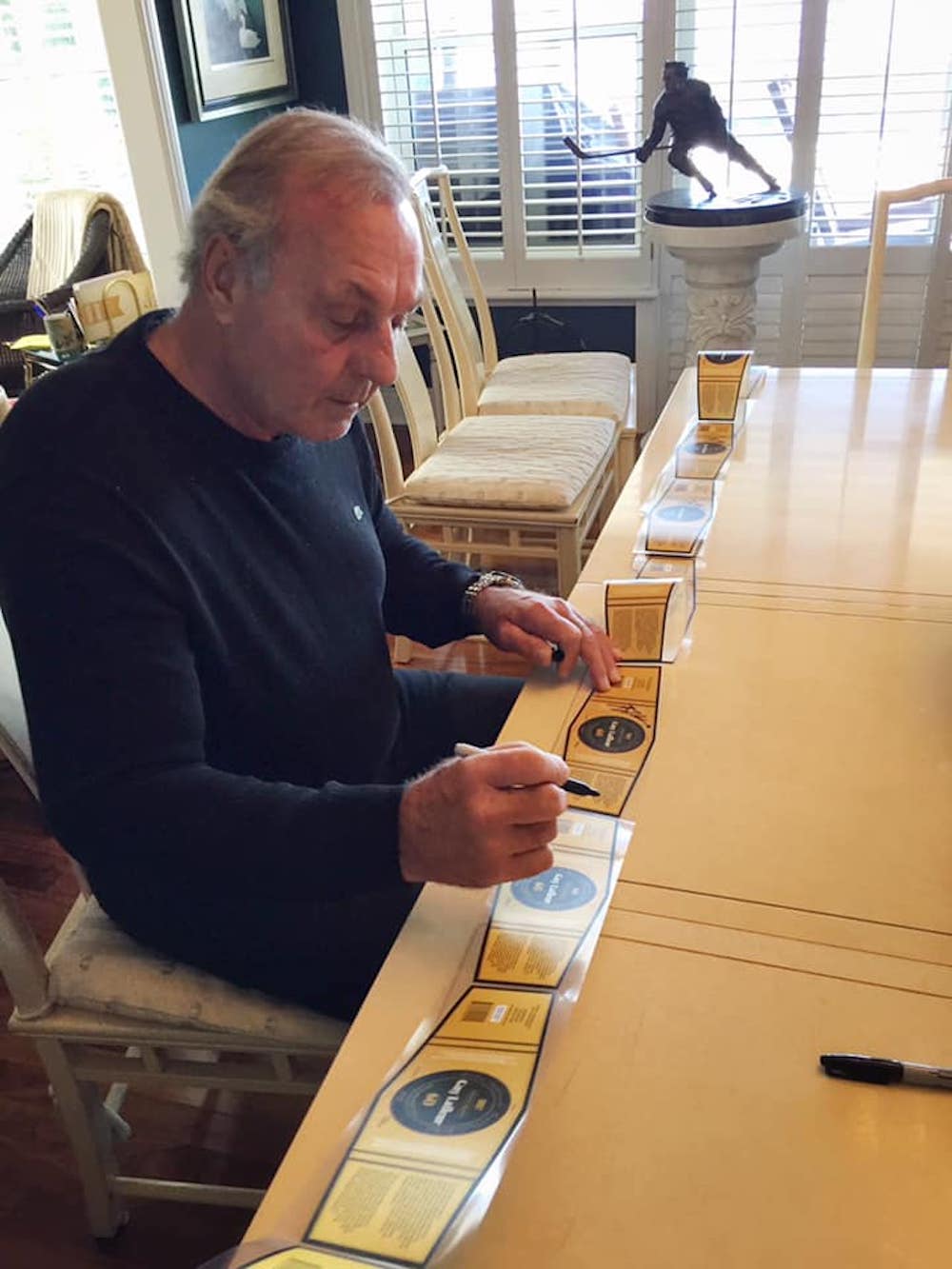
The Guy Lafleur 60 Blanc de Blancs Brut 2012 is a nod to Guy’s 60 goals scored in 1978, and to the 60 months of lees aging of this traditional method brut sparkling made from 100% estate Pinot Blanc from 25-year-old vines. Each bottle is signed by Lafleur, photo above, and presented in an elegant engraved box at a cost of $95 and available directly from Sperling Vineyards here and can be shipped directly to consumers.
The other collaborative wine recently released is from Campbell Kind Wine, a brand founded by former Lifford owner Stephen Campbell, below. Campbell Kind Wines is an international brand created through partnerships with some of the best winemakers from around the world who share a commitment to environmental winemaking. Any wine bottled under the Kind Wine label ensures the wine is carbon neutral in the hands of consumers.

The 2019 Campbell Kind Wine Organic Pinot Blanc is sourced from Sperling’s certified organic vineyard on the East Kelowna slopes of the Okanagan Valley. The family employs regenerative agriculture practices “keeping it green” while sequestering carbon. Due to cover-crops and low to no tillage, the farming and winemaking capture more CO2 from the atmosphere than what is emitted.
The wine can be purchased here.
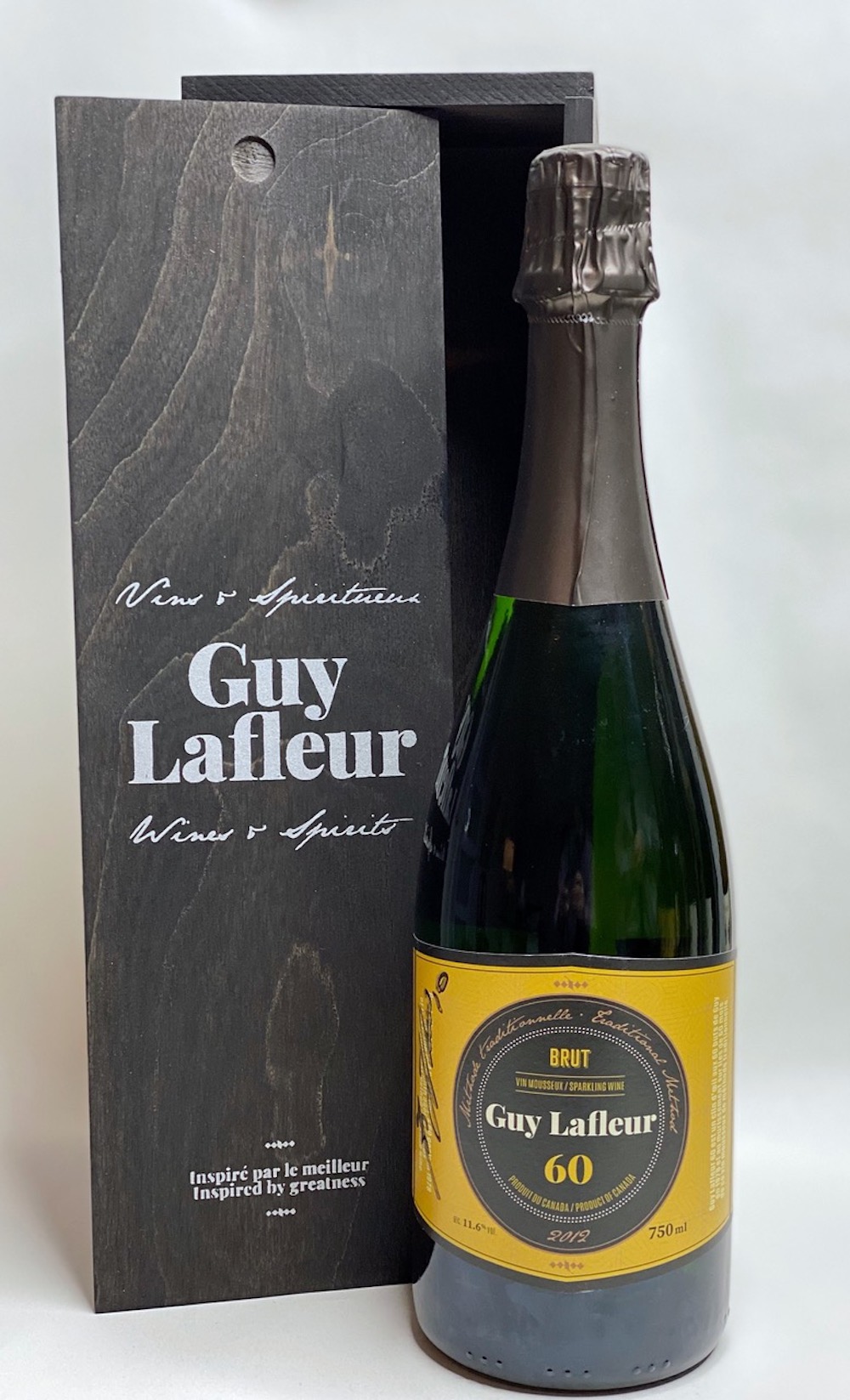
Guy Lafleur 60 Blanc de Blancs Brut 2012 ($95, 500 bottles, each signed by Lafleur, are available online at Sperling Vineyards, 93 points) — The “60” in the name refers to both the number of goals scored by the Montreal Canadiens legend Lafleur and the 60 months of lees aging of this traditional method brut Pinot Blanc sparkling wine. It has an elegant, persistent bubble in the glass with a nose of lemon, biscuit, brioche/leesy notes, green apple, mineral and floral, perfumed accents. The bubbles are fine and focused on the palate with lovely lemon, baked bread, grapefruit/peach, toasty/creamy notes, pear and showing pure elegance and finesse through a lifted finish. Such a beautiful wine and so befitting of a hockey god in this country. Can cellar 5+ years.

Campbell Kind Wine Pinot Blanc 2019 ($21, available online at Sperling Vineyards, 90 points) — Bottom of FormThe Pinot Blanc vines were planted in the estate’s certified organic vineyard in the 1980s on the highest elevation bench. They ripen slowly and are among the last vines to be harvested. A tiny percentage of Riesling from the estate’s 1978 planting was blended into the this wine. Campbell Kind Wine branded wines ensure this wine is carbon neutral in the hands of consumers. It has a nicely perfumed nose of melon, peach, pear, golden apple and citrus accents. It has some fleshiness on the palate and subtle viscosity that shows a much richer profile with more pear, melon, apricot and complexity through a bright finish. Built in an Alsatian style and will likely improve with a couple years in the cellar.
Gold Hill Winery
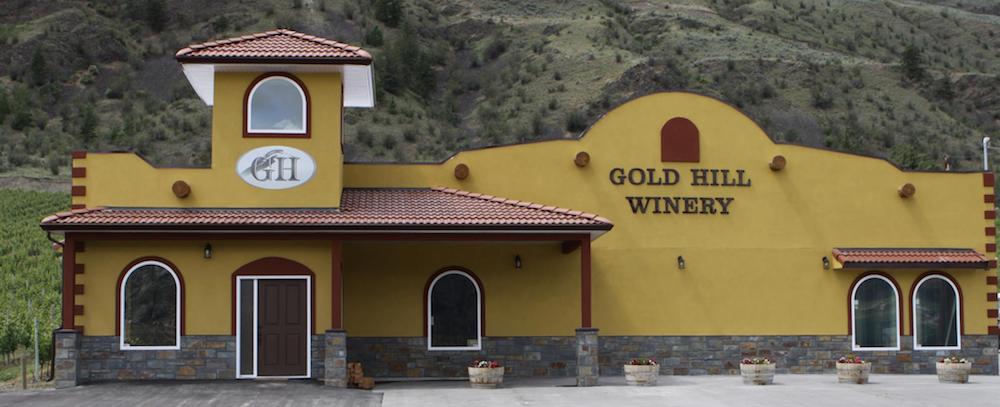
Established in 2009, Gold Hill’s focus has been to produce wines that reflect the charm of the South Okanagan. The wines are created with the spotlight on the estate vineyards. With over three decades of farming in the Okanagan, the Gill brothers, Sant and Gurbachan, believe great wines start with understanding the unique terroir each of the vineyard sites and the Okanagan offers.
Gold Hill’s focus is on Bordeaux varietals well suited to the warm climate of the South Okanagan, with attention on Cabernet Franc as the flagship varietal. Cabernet Franc has quickly become the preeminent variety in the portfolio.
Here’s a trio of Gold Hill wines we can recommend:

Gold Hill Cabernet Franc 2016 ($35, 91 points) — This classically styled Cabernet Franc spent 18 months in oak and shows brambly red berries on the nose then herbs, cassis, dried tobacco and spices. It has good structure on the palate with dark cherries, brambly raspberries and anise with underlying savoury herbs, licorice, pepper, spice and a juicy, vibrant finish.

Gold Hill Syrah 2016 ($35, 92 points) — A small portion of Viognier was blended into the Syrah and the co-fermented wine was aged for 18 months in oak, 40% of which was new oak. Right out of the glass, the peppery/meaty/savoury notes jump with smoky red berries, boysenberries, orange peel, forest floor, cassis and spice. It’s juicy and highly concentrated on the palate with ripe red berries, anise, currants and lovely savoury/smoky/grilled meat accents that lead to a tangy, spicy finish. A lovely Syrah that can cellar for 4+ years.

Gold Hill Grand Vin Family Reserve Meritage 2016 ($65, 93 points) — The Grand Vin is the culmination of the estate’s best efforts. It’s a blend of predominantly Cabernet Franc and Merlot, with Cabernet Sauvignon and Malbec, and made from the ripest fruit selected from the estate’s home block. Each variety was picked and crushed separately, fermented and blended before being transferred to 100% new French oak barrels where it was aged for 18 months. It’s a real benefit for the consumer that these reds are released with some serious bottle aging. This has an elegant, refined nose of tightly wound blackberries, dark cherries, black currants, earth, spice, cocoa and toasty vanilla notes. It’s wow! on the palate, showing a rich broth of anise, dark cherries, blackberries, currants and an enticing vein of Cabernet Franc-dominant savouriness and herbaceous notes all held together by ripe tannic structure, lovely spices and a finessed finish. This will benefit from some aging to further open up the nose and soften the palate and will improve for 7+ years. A beauty.








Comment here